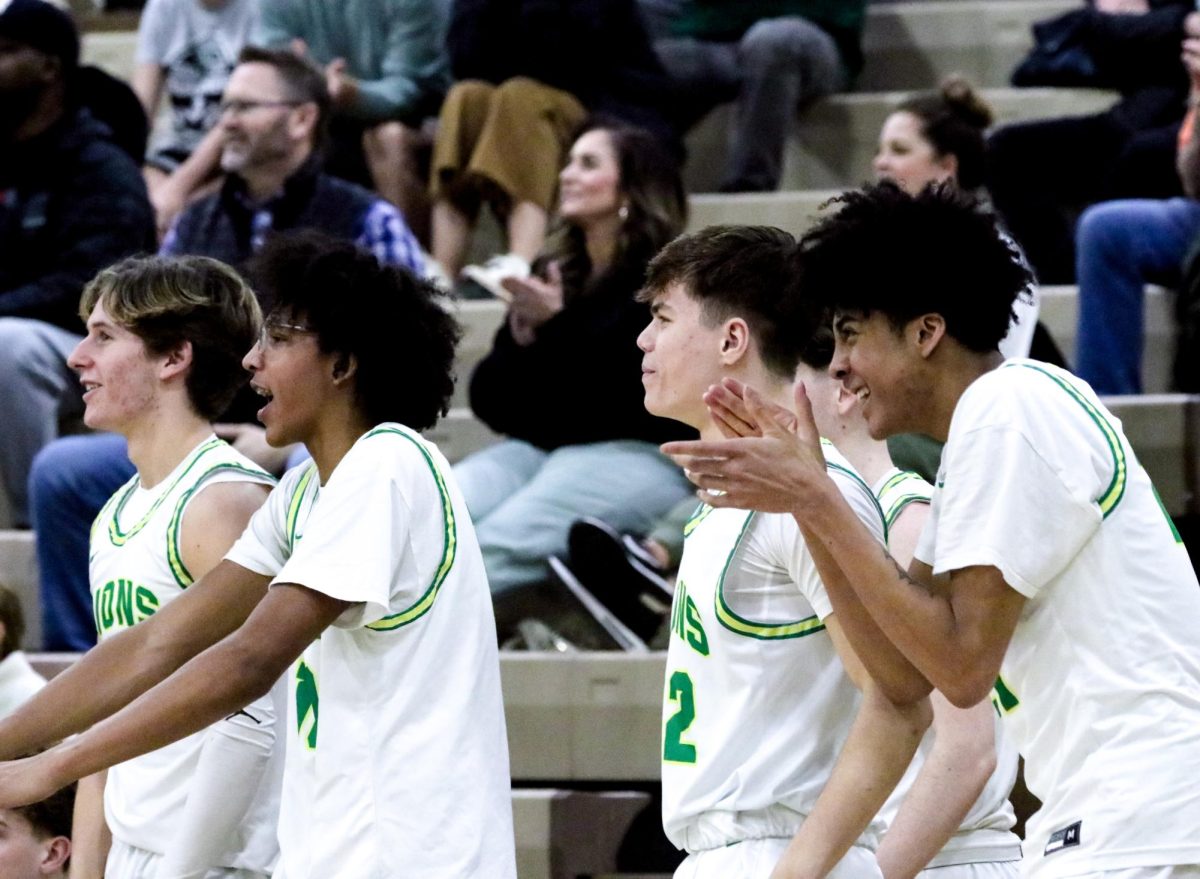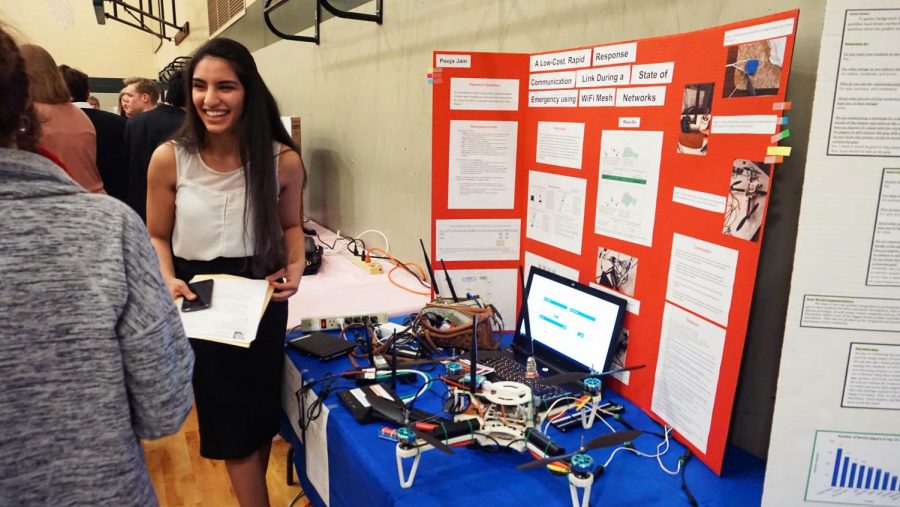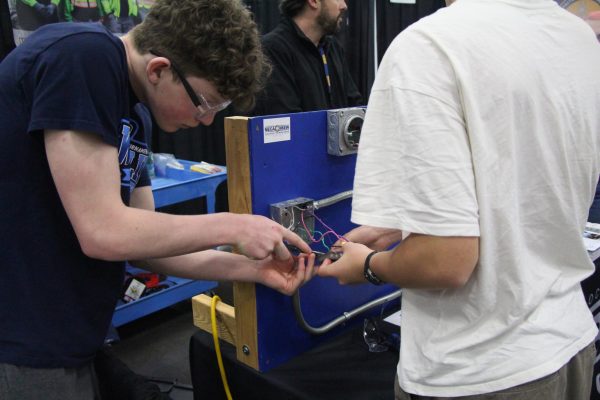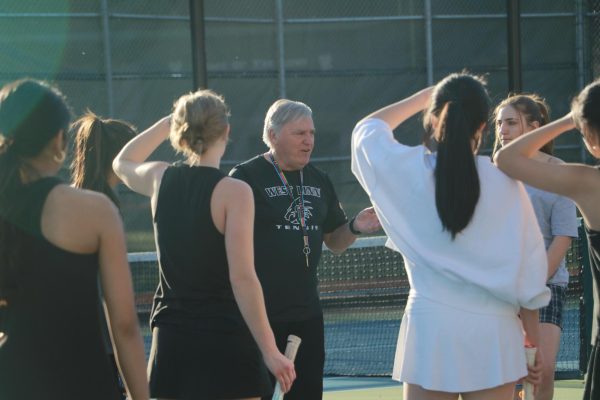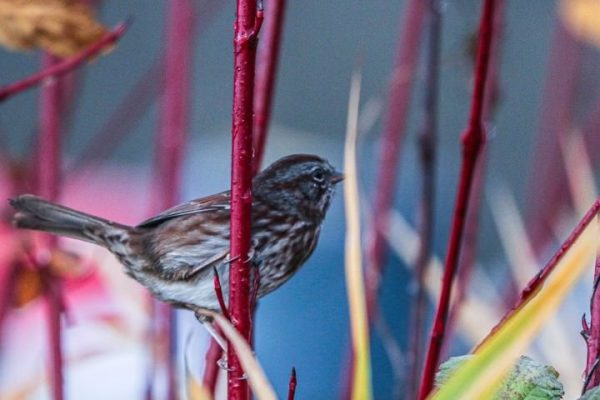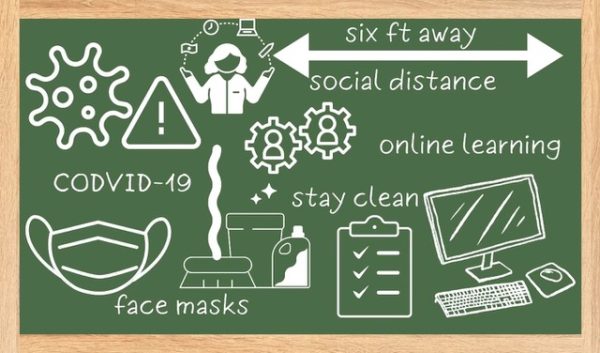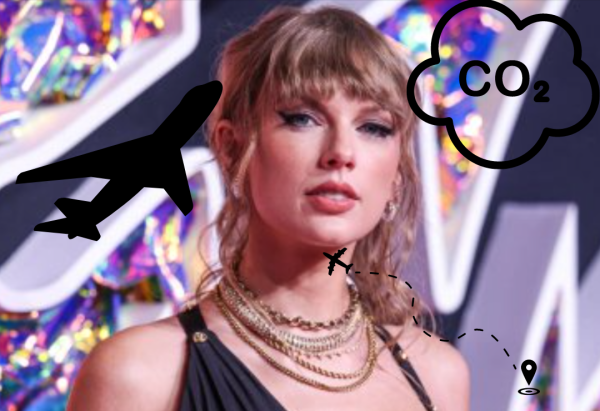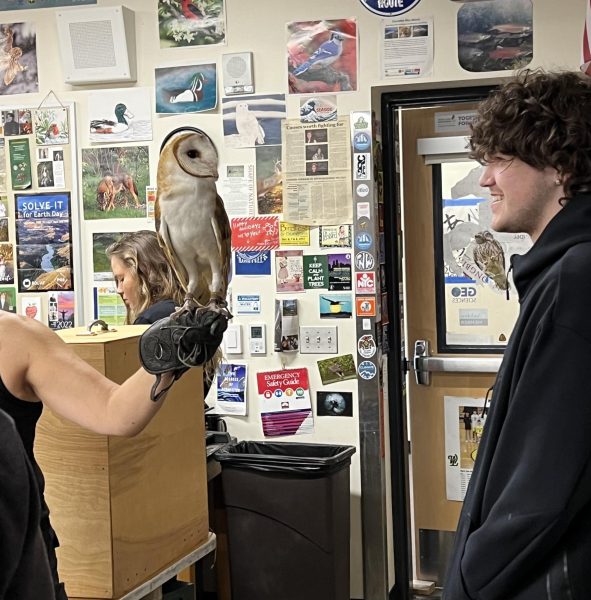AI, coral reefs, meteorites
Young scientists present inquiries at ISEF Symposium; six to share research at fair in Pittsburgh, Pa.
More than 200 students shared their science and engineering projects as part of the CREST-Jane Goodall Science Symposium earlier this month. In the Auxiliary Gym, 243 students from West Linn High, Wilsonville High, and Arts and Technology High School presented 161 projects as part of the district’s 17th annual fair.
The young scientists shared their research with 53 judges, of volunteer scientific experts and professionals, on March 5. The public symposium and the awards ceremony were the night of March 6.
Along with high school inquiries, the symposium included primary and middle school projects and displays from the school robotics team, meteor experts and others. The auditorium featured a lecture by Rebecca Vega Thurber, Oregon State University associate professor of microbiology.
The night ended with the awards ceremony. Students were invited to the stage to receive the certificates and other prizes. Following is a full list of award recipients.
For more coverage, see the next print edition of The Amplifier.
Category Awards
Behavioral Sciences: Cognitive
First: Cassidy Paasch for “Children’s Choice to Deceive.”
Second: Jacob Balin and Curtis Olels for “The Effect of Music on Focus.”
Third: Chloe Clarke, Sara Hutchins and Siena Dorman for “Millennials/Generation Z: The Dependency on Cell Phones and the Lack of Self Control Around Them.”
Honorable Mention: Kennedy Waible, Jessica Caulk for “Mental Fatigue Affecting Reaction Time
Promising Young Scientist: Derek Valentine, Thor Severson for “How Does Mental Practice Help Your Performance.”
Behavioral Sciences: Social
First: Coleman Henry for “Effect of Siblings on Depressive Tendencies.”
Second: Haley Stahl and Sydney Burns for “The Effect that Plants Have on Student Test Scores.”
Third: Reem Alharithi and Amelia Staats for “The Effects of Brand Names on Adolescents.”
Honorable Mention: Jake Heinonen, Kevin Wang and Mitchell Stewart for “The Effect of Club Participation on a Student’s GPA.”
Promising Young Scientist: Ireland Gomes’ “Post-concussion social outcomes.”
Bioengineering and Materials Sciences
First: Nathan Tidball for “Single Chamber MFC: Role of Extracellular Phosphate on Heavy Metal Precipitation.”
Second: John Thatcher and Brandon Wied for “Synthetic Bamboo For urban search and rescue.”
Third: Anais Kolesnikov and Hannah Gloster for “Save Our Skin.”
Honorable Mention: Elijah Cirioli and James Nicholson for “Using Near-Infrared Spectroscopy to Non-Invasively Measure Blood Glucose in Diabetics.”
Promising Young Scientist: Shannon Groppe for “Concussion Helmet.”
Chemistry
First: Katarina Pejcinovic for “Engineering Soybean Shells into a Functional Bioplastic.”
Second: Jared Wieland for “Polyacrylamide: a Revolutionary Method of Water Distillation.”
Third: Casey Culbertson for “Improving the Efficiency of Electrolysis of Water for Hydrogen Gas Production.”
Honorable Mention: Ellie Grano and Sydney Travnicek for “Shoe Grip.”
Promising Young Scientist: Kullen Whittaker: “How does the pH of a Solution affect its Capillarity?”
Computer Sciences and Robotics
First: Parker Carlson for “Improving Machine Recognition of Handwritten Japanese Characters through a Context-Aware System.”
Second: Elijah Dodd, Jonathan Keller for “A New Autonomous Holonomic Rolling Robot.”
Third: Neel Jain for “How Secure Are Our Networks?”
Honorable Mention: Matthew Macovsky for “Computational Identification of Fake News.”
Promising Young Scientist: Meg Hoots for “Footprints in the Right Direction.”
Electrical and Mechanical Engineering
First: Pooja Jain for “A Low Cost, Rapid Response Communication Link During a State of Emergency Using WiFi Mesh Networks.”
Second: Jessica Yu for “SmartSwimmer – A Novel Drowning Prevention System.”
Third: Caitlin McCabe for “Increasing Pedestrian Safety Through Kinetic Tiles.”
Honorable Mention: Elijah Deckon for “Bismuth Solar Cells.”
Promising Young Scientist: Gabi Bean for “Improving Prosthetics.”
Energy and Environmental Engineering
First: Hayden Wierman for “Reducing The Liquid Nitrogen Consumption of Superconducting Wires.”
Second: Davis Schmitz, Aidan Sloan and Thomas McMahon-Skates for “Novel Algal Biofuel.”
Third: Andrea Swenson for “Using Methanotrophs To Combat Man Made Methane.”
Honorable Mention: Allison Griffiths and Maddie Aldrich for “Water Saving Irrigation System.”
Promising Young Scientist: Hayden Wierman for “Reducing The Liquid Nitrogen Consumption of Superconducting Wires.”
Environmental and Earth Sciences
First: Abigail Hasler and Camille Rule for “The Effects of Limiting Nutrients on Emiliania huxleyi Population Growth.”
Second: Mikayla Ellsworth and Arianna Chappell for “Studying the Effect of BPA on Drosophila.”
Third: Kayla Tence for “Combating Ocean Acidification Through Water Plant Fertilization.”
Honorable Mention: Lauren Hurley and Alice Kang for “Saving Our Seas: Using Algae to Lower Dissolved CO2.”
Promising Young Scientist: Lauren Hurley and Alice Kang for “Saving Our Seas: Using Algae to Lower Dissolved CO2.”
Life Sciences
First: Hannah Budroe and Michelle Stevens for “Improving Coccolithophore (Emiliania huxleyi) Tolerance to Ocean Acidification Through Artificial Directional Selection.”
Second: Elizabeth Kness for “Predicting Overstep in Horses: Does Conformation Matter?”
Third: Sara Hardwick for “Simulating Natural Selection in Tetraselmis Algae Colonies.”
Honorable Mention: Burke Robinett and Zachary Pryor for “Mesoscale habitat use by herbivores and predators in NW Oregon.”
Promising Young Scientist: Katherine Mason and Katherine Kling for “Plants’ Adaptations to Drought.”
Medicine and Health Sciences
First: Rishima Mukherjee and Marlee Feltham for “Association of KIT Gene with Early-Onset Colorectal Cancer.”
Second: Anna Nielsen, Sophia Nielsen for “Are You at Risk for a Bad Hair Day?”
Third: Varsha Karthikeyan for “In-Silico Identification of Beta-Lactamase Inhibitors.”
Honorable Mention: Chloe Kuhlmann for “How Hippotherapy Improves Functional Ability of Children with Cerebral Palsy.”
Promising Young Scientist: Hannah Goodman for “Hormones Effect on Planarian Regeneration.”
Microbiology
First: Dana Zaidan, Athena Lackides for “Advancing the Science of the Treatment and Pathogenesis of Alzheimer’s Disease: the Effects of Fenugreek on Biofilm Disruption.”
Second: Sophia Vahsholtz for “Can Iberin Inhibit Quorum Sensing in P. putida?”
Third: Viv Kiss, Yaya Kiss for “Assessing the Effects of Hypoxia on Saccharomyces cerevisiae Mitochondrial Reproduction.”
Honorable Mention: Natalie Cha for “Do Antidepressants Hinder Mental Health?”
Promising Young Scientist: Ashley Chon for “Dispersal Methods of Pathogens Within Pig Lungs.”
Physics & Mathematics
First: Raymond Berry for “Uniform Random Number Generation with Bounded Termination.”
Second: Haydn Maust for “Statistical Analysis of Academic Writing by Grade Level.”
Third: Casey Colley for “Affect of an Aging Population on the Economy.”
Honorable Mention: Aileen Converse and Grace Converse for “Is Bitcoin the New Gold? Predicting the Future of Bitcoin as a Currency using Pattern Analysis of Japanese Candlestick Charts.”
Promising Young Scientist: Jakob Conner for “Absorption of Radiation of Different Household Materials.”
Special Awards
American Meteorological Society: Evan McKinley for “The Efficacy of Chicken Fat in Predicting the Weather.”
American Psychological Association: Cassidy Paasch for “Children’s Choice to Deceive.”
Association of Women in Geosciences: McKenna Bonn-Savage for “The Correlation of Rocks and Lichens”
Arizona State University Walton Foundation Sustainability Award: Jared Wieland for “Polyacrylamide: a Revolutionary Method of Water Distillation”; Davis Schmitz, Aidan Sloan and Thomas McMahon-Skates for “Novel Algal Biofuel.”
Biophysics Award: Joshua Willson for “How Can We Use Substances Other Than Antibiotics to Solve Major World Problems.”
Green Chemistry Award: Jared Wieland for “Polyacrylamide: a Revolutionary Method of Water Distillation.”
Intel Computer Science Excellence Award: Parker Carlson for “Improving Machine Recognition of Handwritten Japanese Characters through a Context-Aware System.”
Mu Alpha Theta Mathematics Award: Raymond Berry for “Uniform Random Number Generation with Bounded Termination.”
NASA Earth Systems Award: Noah Ryan-Richey for “Impact of Wildfires in the United States”; Taylor Edwards for “Frankia and Forest Fires.”
National Oceanic and Atmospheric Association: Abigail Hasler and Camille Rule for “The Effects of Limiting Nutrients on Emiliania huxleyi Population Growth.”
Oregon Environmental Health Association: Kalia Pincock, Sinead Jones Methods for Improving Recycling
Oregon State University Engineering Scholarship for four years, $1,000: Hayden Wierman for “Reducing The Liquid Nitrogen Consumption of Superconducting Wires.”
Oregon State University Scholarship for one year, $2,000: Parker Carlson for “Improving Machine Recognition of Handwritten Japanese Characters through a Context-Aware System”; Pooja Jain for “A Low Cost, Rapid Response Communication Link During a State of Emergency Using WiFi Mesh Networks Ricoh Sustainable Development Award”
Ricoh Sustainable Development Award: Kai Saito and Cameron Muresan for “3D-Printed Instrument Mouthpieces.”
Best In Vitro Biology Award:Nathan Tidball for “Single Chamber MFC: Role of Extracellular Phosphate on Heavy Metal Precipitation.”
Best Use of the International System of Units: Mikayla Ellsworth and Arianna Chappell for “Studying the Effect of BPA on Drosophila.”
U.S. Air Force Research Award: Brooklyn Stenstrom and Meredith Thomas for “Impact of High Intensity Sports on Knee Joints”; Elijah Dodd and Jonathan Keller for “A New Autonomous Holonomic Rolling Robot.”
U.S. Navy Research Award: Katarina Pejcinovic for “Engineering Soybean Shells into a Functional Bioplastic”; Meg Hoots for “Footprints in the Right Direction”; Nikolay Galtsev for “Earth in a Gallon Sized Bottle: Modeling DMS Geoengineering”; Parker Carlson for “Improving Machine Recognition of Handwritten Japanese Characters through a Context-Aware System.”
Best Field Knowledge: Camryn Pettenger-Willey for “Identifying Terrestrial Nitrogen Fixing Genera of Cyanobacteria.”
Best Experimental Design: Sydney Byun for “The Effect of Alanine on the Rate of Stem Cell Regeneration”; Sophia Somerscales and Amanda McDougal for “The Effect of Crude Oil Exposure on the Growth of Saccharomyces cerevisiae.”
Best Display Board – Analog: Camryn Pettenger-Willey for “Identifying Terrestrial Nitrogen Fixing Genera of Cyanobacteria.”
Best Display Board – Digital: Abigail Hasler and Camille Rule for “The Effects of Limiting Nutrients on Emiliania huxleyi Population Growth.”
Best Use of Statistical Analysis: Ainsley Like for “Are People That Wear Glasses Smarter?”
Innovation in Materials Science: Caitlin McCabe for “Increasing Pedestrian Safety Through Kinetic Tiles.”
Most Creative Project: Anja Reeber and Isaac Reeber for “Origami Beehive.”
Multidisciplinary Research Award: Makayla Bruce and Justin Bruce for “Embracing Scoliosis.”
Best Logbook Award: Hayden Wierman for “Reducing The Liquid Nitrogen Consumption of Superconducting Wires.”
Women in Engineering Award: Caitlin McCabe for “Increasing Pedestrian Safety Through Kinetic Tiles.”
Paul Sherman Award: Zoe Owen for “Beneficial Bacteria for the Appendix”; Maxwell Wilson for “The Effects of a Restrictive Diet on the Expression of Huntington’s Disease”; Nathan Sostrin for “Creating a Simulator for Celestial Body’s Gravities”; Kaedyn Murphy for “Portland, Oregon Nuclear Attack Evacuation Plan.”
Stockholm Jr. Water Prize: Madeleine Itschner for “The Effect of Global Warming’s Rising Temperatures on Pacific Northwest Wetland Microbial Ecology”; Lauren Hurley and Alice Kang for “Saving Our Seas II Using Algae to Lower Dissolved CO2”; Isabella Kleiner for “Testing Of Zooxanthallae.”
Yale Engineering Award: Jessica Yu for “SmartSwimmer: A Novel Drowning Prevention System.”
Best of Fair finalists who will present at the Intel ISEF in Pittsburgh, Pa.
Hannah Budroe and Michelle Stevens, juniors: “Improving Coccolithophore (Emiliania huxleyi) Tolerance to Ocean Acidification Through Artificial Directional Selection”; Nathan Tidball, junior: “Single Chamber MFC: Role of Extracellular Phosphate on Heavy Metal Precipitation”; Pooja Jain, junior: “A Low Cost, Rapid Response Communication Link During a State of Emergency Using WiFi Mesh Networks”; Rishima Mukherjee and Marlee Feltham, juniors: “Association of KIT Gene with Early-Onset Colorectal Cancer.”
Observers who will attend the Intel ISEF but not present.
Katarina Pejcinovic, sophomore: “Engineering Soybean Shells into a Functional Bioplastic”; Hayden Wierman, freshman: “Reducing The Liquid Nitrogen Consumption of Superconducting Wires.”
Your donation will support the student journalists of West Linn High School. Your contribution will allow us to continue to produce quality content by purchasing equipment, software, and continuing to host our website on School Newspapers Online (SNO).

Amateur magician and wannabe improv comedian Philip Chan has been writing for The Amplifier since his freshman year. Now co-editor in chief, Chan firmly...




















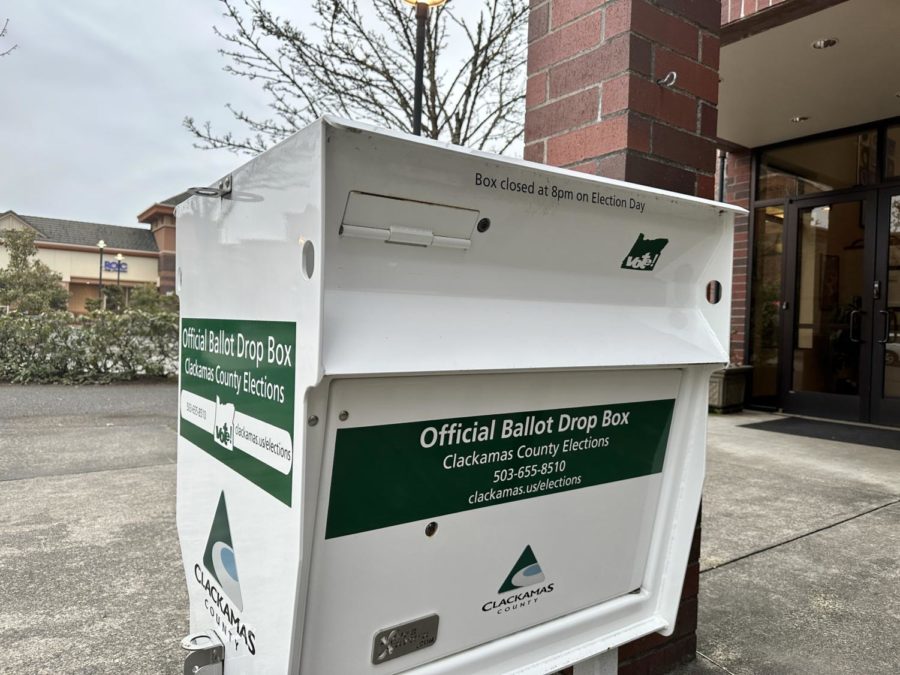



![Game, set, and match. Corbin Atchley, sophomore, high fives Sanam Sidhu, freshman, after a rally with other club members. “I just joined [the club],” Sidhu said. “[I heard about it] on Instagram, they always post about it, I’ve been wanting to come. My parents used to play [net sports] too and they taught us, and then I learned from my brother.”](https://wlhsnow.com/wp-content/uploads/2024/03/MG_7715-2-1200x800.jpg)
![At the bottom of the third inning, the Lions are still scoreless. Rowe stands at home plate, preparing to bat, while Vandenbrink stands off to the side as the next batter up. Despite having the bases loaded, the team was unable to score any runs. “It’s just the beginning of the season. We’re just going to be playing out best by June, [and] that’s where champions are,” Rowe said.](https://wlhsnow.com/wp-content/uploads/2024/03/IMG_3077-1200x900.jpg)






![The teams prepare to start another play with just a few minutes left in the first half. The Lions were in the lead at halftime with a score of 27-0. At half time, the team went back to the locker rooms. “[We ate] orange slices,” Malos said. “[Then] our team came out and got the win.”](https://wlhsnow.com/wp-content/uploads/2023/10/IMG_2385-1200x800.jpg)





